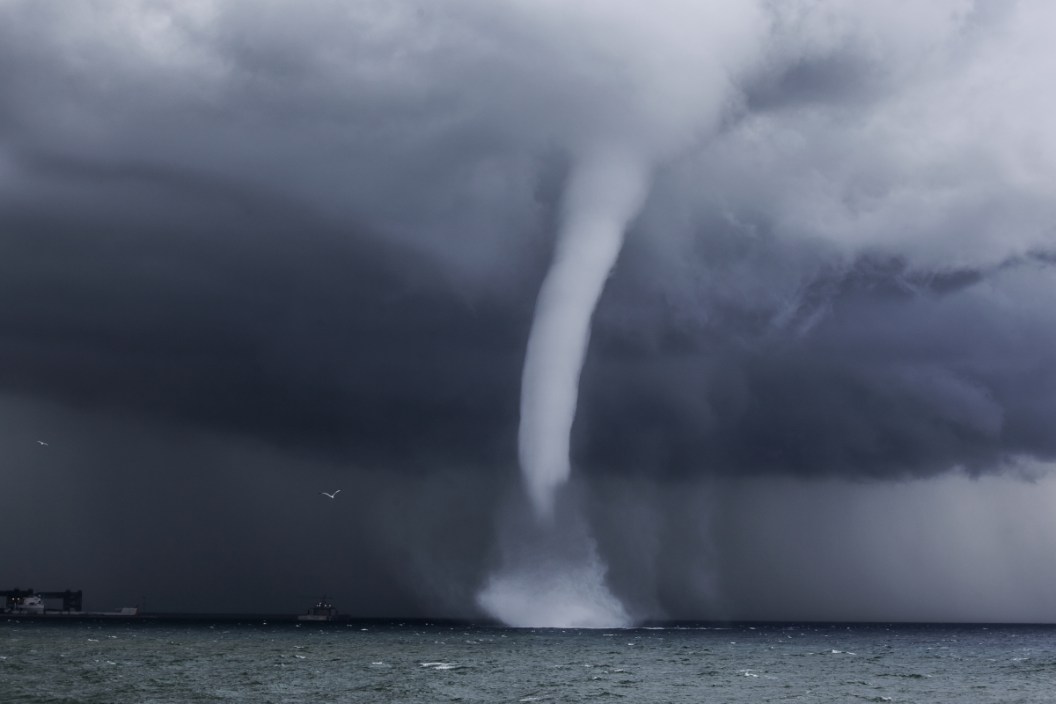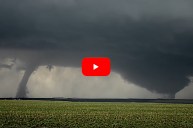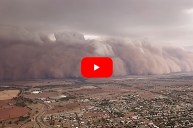These are the differences between tornadoes and waterspouts.
When it comes to the different types of weather phenomenon, nothing captures the imaginations quite like a waterspout or a tornado. At first glance, both weather events look strikingly similar. Both are rotating columns of air that can bring high winds and cause an awful lot of damage given the right circumstances.
While much about twisters and waterspouts remains shrouded in mystery, meteorologists have noted some key differences between both. It is not just in the way they form or the places they occur most frequently either.
Today we will look at these two wonders of meteorology a little more in-depth and explain these differences. We will also give some tips on what to do should you encounter either in your outdoor adventures.
Tornadoes
We will explain tornadoes first since they are the more severe of the two phenomenon. As we already stated, a tornado is a rotating column of air that makes contact on the ground and with the clouds from a thunderstorm. According to the National Oceanic and Atmospheric Administration, most tornadoes are spawned out of a supercell thunderstorm, particularly ones in places with strong vertical wind shears, such as the plains of tornado alley here in the United States.
NOAA notes there is a strong and persistent updraft in any tornado that lifts this rotating air column. High wind speeds then cause the updraft to start rotating, forming what is known as a mesocyclone. It is from these mesocyclones that tornadoes and funnel clouds usually form, although the exact conditions for a tornado to form out of a mesocyclone are unknown.
One fortunate aspect of the mesocyclone is that the severe storm clouds produce a distinctive "hook" on radar that meteorologists can monitor and use to predict tornadoes. The only bad news is that there are usually only minutes to get a tornado warning out to people in the way before it hits. The condensation funnel you see in a tornado is a result of water vapor turning to liquid. The tornado's color may also be dependent on the type of terrain the tornado forms over as it picks up dust and debris.
The main thing to know about tornadoes is they are much more destructive form of severe weather than waterspouts. The enhanced Fujita scale that measures tornado intensity has the lowest level storm, an EF0, having wind speeds between 65-85 miles per hour. The high end of the scale, EF5, classifies a tornado as having wind speeds over 200 miles per hour. When those winds hit trees, structures, or anything else in their way, odds are they are going to cause significant damage.
Waterspouts
While waterspouts look just like tornadoes, only over a body of water, they do form in different ways. Meteorologists have identified multiple types of waterspouts. We will start with the tornadic waterspout because it is just as the name infers. It is a funnel that formed over land from severe thunderstorms as a tornado before moving over water. Meteorologists usually consider it to be a tornado again if it then moves back onto land before dissipating. The other type of waterspout is what NOAA calls "fair weather waterspouts." Their formation is based more on air and water temperature than severe storms. They are also usually much weaker than their land counterparts.
For a waterspout to form, there must be warm waters that evaporate and cool, often developing cumulus clouds. Because of instabilities between the warm water and cooler air up high, updrafts are formed and can then be started spinning by winds, forming a vortex. The big difference between this and a tornado is that the tornado starts in the clouds and works its way down while a waterspout starts on the surface of the water and goes up.
According to the National Weather Service, the funnel goes through five stages, starting with a dark spot on the water, followed by a spiral pattern, then a spray ring, and finally a mature waterspout and dissipation. Another key difference is that a waterspout moves very little, if at all. Severe tornadoes have been known to travel for miles across the landscape, causing destruction wherever they go.
Because they require warm waters to form, waterspouts are most common in places like the southern U.S. coast. Especially in Gulf Coast waters like Louisiana or Florida. The Florida Keys are a hot spot for them. The Great Lakes are another common place for them to form, although it is usually only from August through October after summer is over and the waters are still warm.
What to do if you encounter a tornado or waterspout.
Tornadoes can strike without much warning. This why NOAA recommends having a plan in place for these destructive storms before they happen. Get to a basement or cellar if you can. If your home does not have these, get to the lowest level you can and the inner-most part of the home. Getting under a sturdy piece of furniture like a desk or bed is also recommended. NOAA notes that scientists now recommend against opening windows in a house to decrease pressure as that is nothing more than an urban myth. If caught out in the open with no chance of finding shelter, look for the lowest spot possible. Culverts, ditches, and ravines. Lay flat and use your hands to protect your head from flying debris.
While almost everyone knows about the dangers of tornadoes, many people do not realize waterspouts can also be a hazard, especially to boaters. While waterspouts are often associated with light winds, they can cause damage if they happen to move onshore. NOAA recommends moving at a 90-degree angle to the waterspout's movement to avoid it.
Even though there are videos online showing just that, meteorologists also recommend against trying to ride a boat through a waterspout. The best course of action is probably to head for shore and a shelter if the waterspout is close.
For more outdoor content from Travis Smola, be sure to follow him on Twitter and check out his Geocaching and Outdoors with Travis YouTube channels.
NEXT: THE AXIS DEER AND HOW THEY'RE IMPACTING PARTS OF THE UNITED STATES
WATCH





